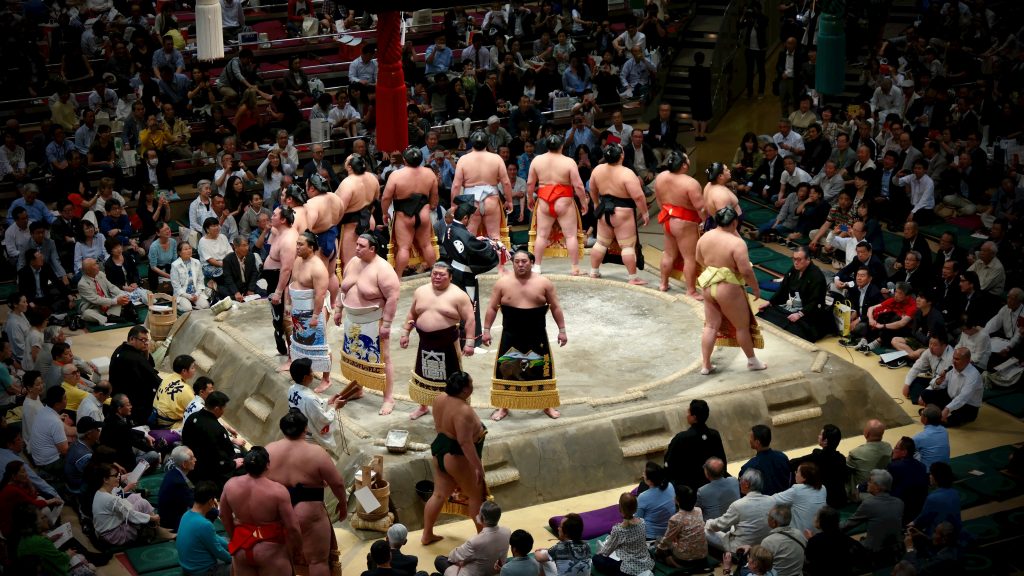
Sumo is a traditional Japanese sport that dates back over 1,500 years. It has deep roots in Shinto rituals and was initially performed as a form of entertainment for the gods to ensure a bountiful harvest. Over time, it evolved into a professional sport with a structured set of rules and rituals.
Here are some key points about sumo wrestling:
- Basic Rules: The objective of sumo is to force your opponent out of the ring (dohyo) or make any part of their body, other than the soles of their feet, touch the ground. Matches are short and intense, often lasting only a few seconds.
- Sumo Wrestlers (Rikishi): Sumo wrestlers are known as Rikishi. They undergo rigorous training in sumo stables (heya) and lead highly disciplined lives. There are different ranks within the sumo hierarchy, with the top division being the makuuchi.
- Tournaments (Basho): Professional sumo is organized into six major tournaments each year, known as basho. These tournaments take place in Tokyo, Osaka, Nagoya, and Fukuoka. Each basho lasts for 15 days, and wrestlers compete in a round-robin format to determine the overall winner.
- Sumo Stables and Lifestyle: Sumo wrestlers live together in training stables, where they follow a strict regimen of training, eating, and sleeping. Their daily lives are highly structured, and they adhere to traditional customs.
- Sumo Attire: During matches, sumo wrestlers wear a distinctive outfit called a mawashi, which is a loincloth. The color of the mawashi indicates the wrestler’s rank. They also wear a topknot hairstyle, which is a symbol of their commitment to the sport.
- Rituals and Ceremonies: Sumo has various rituals and ceremonies before, during, and after matches. The pre-match ritual involves salt-throwing to purify the ring and drive away evil spirits.
- Promotion and Demotion: Wrestlers are ranked within divisions based on their performance in tournaments. Those who perform well are promoted to higher ranks, while those with poor records may be demoted. The ultimate goal for many wrestlers is to reach the prestigious rank of yokozuna, the highest in sumo.
- Historical Significance: Sumo has a rich cultural and historical significance in Japan, and its traditions are deeply rooted in the country’s heritage. The sport has evolved over the centuries, adapting to changes in society while preserving its essential elements.
Overall, sumo wrestling is not just a sport but a reflection of Japanese culture, discipline, and tradition.
